- Home
- Michael Swanwick
Bones of the Earth
Bones of the Earth Read online
Bones of the Earth
Michael Swanwick
Paleontologist Richard Leyster has achieved professional nirvana: a position with the Smithsonian Museum plus a groundbreaking dinosaur fossil site he can research, publish on, and learn from for years to come. There is nothing that could lure him away—until a disturbingly secretive stranger named Griffin enters Leysters office with an ice cooler and a job offer. In the cooler is the head of a freshly killed Stegosaurus.
Griffin has been entrusted with an extraordinary gift, an impossible technology on loan to humanity from unknown beings for an undisclosed purpose. Time travel has become a reality millions of years before it rationally could be. With it, Richard Leyster and his colleagues can make their most cherished fantasy come true. They can study the dinosaurs up close, in their own time and milieu.
Now, suddenly, individual lives can turn back on themselves. People can meet, shake hands, and converse with their younger versions at various crossroads in time. One wrong word, a single misguided act, could be disastrous to the project and to the world. But Griffin must make sure everything that is supposed to happen does happen—no matter who is destined to be hurt… or die.
And then there’s Dr. Gertrude Salley—passionate, fearless, and brutally ambitious—a genius rebel in the tight community of “bone men” and women. Alternately both Leyster’s and Griffin’s chief rival, trusted colleague, despised nemesis, and inscrutable lover at various junctures throughout time, Salley is relentlessly driven to screw with the working mechanisms of natural law, audaciously trespassing in forbidden areas, pushing paradox to the edge no matter what the consequences may be. And, when they concern the largest, most savage creatures that ever lived, the consequences may be terrifying indeed.
Michael Swanwick
Bones of the Earth
This book is dedicated to all good teachers everywhere, most particularly those of the William Levering School and Central High School in Philadelphia, to whom more is owed than can ever be repaid.
Special thanks are due to Ralph Chapman, Linda Deck, Tom Holtz, Pete Tillman, and Bob Walters for giving generously of their time and knowledge. They are, of course, not responsible for any errors I may have made, just as I am not responsible for anything rendered invalid by discoveries they or their colleagues may make after this book reaches print. I am also grateful to Harry Turtledove for help with Greek nomenclature, to Suzette Haden Elgin for management strategies of the Lakota Sioux, to Charles Sheffield for the future history of the Earth, to William Gibson for the Rolex Milgauss (nice watch, Bill!), and to my favorite goddaughter in the known universe, Alicia Ma, for naming Lai-tsz. I am most indebted, as always, to the M.C. Porter Endowment for the Arts, most particularly for help writing the abstract for the infrasound paper.
1. Predation Event
Washington, D.C.: Cenozoic era. Quaternary period. Holocene epoch. Modern age. 2010 C.E.
If the whole tangled affair could be said to have a beginning at all, it began on that cold, blustery afternoon in late October when the man with the Igloo cooler walked into Richard Leyster’s office. His handshake was firm, and he set the cooler casually down on a tabletop between a lime-green inflatable tyrannosaur and a tray of unsorted hadrosaur teeth without asking permission first. His smile was utterly without warmth. He said his name was Griffin and that he had come to offer Leyster a new position.
Leyster laughed and, sitting back on the edge of his desk, put down the man’s card without looking at it. “You could hardly have chosen a worse time to make the offer.”
“Oh?” Griffin shifted a stack of AutoCAD boxes from a chair to the floor. His suit was expensive; he tugged at the knees as he sat, to protect the cloth. He had a heavy, inexpressive face. “Why is that?”
“Well, to begin with, the Smithsonian gave me my current position while I was still finishing up my doctorate. That’s one hell of an honor, and I’d look pretty damn ungrateful to move on after less than three years service. I realize you’re offering more money—”
“I haven’t mentioned salary yet.”
“The Smithsonian is acutely aware of what an honor it is to work for them,” Leyster said dryly. “One of our technicians moonlights selling beer at Orioles games. Guess which job pays him more?”
“There are other inducements besides money.”
“Which is precisely why you’re wasting your time. I was on a dig this summer in Wyoming where we uncovered a trackway that’s just… well, it’s the sort of find that comes along once in a lifetime—if you’re lucky. Whatever you’re offering couldn’t possibly be worth my walking away from it.”
For a long moment, Griffin said nothing. Swiveling in his chair, he stared out the window. Following his gaze, Leyster saw only the dark sky, the slick orange tiles on the rooftops opposite, the taxis throwing up gray rooster tails behind themselves on Constitution Avenue, the wet leaves clinging to the glass. Then, turning back, Griffin asked, “Could I see?”
“Do you really want to?” Leyster was surprised. Griffin didn’t seem the sort to be interested in original research. A bureaucrat, an arranger, an organizer, yes. A politician, possibly. But never a scientist. Griffin hadn’t even arranged for this meeting as a scientist would, with the name of a mutual colleague and his professional affiliation held high, but through the administrative apparatus of the Museum. Some apparatchik, he couldn’t even remember who, had called and said that somebody had applied pressure to somebody else up the line, and, figuring it was easier to take the meeting than hear out the explanation, he’d said he’d do it.
“I wouldn’t ask if I didn’t.”
With a mental shrug, Leyster booted up first his computer and then the trackway program, routing the image to a high-density monitor hung on the wall. The image was as detailed as modern technology could make it. He had provided multiple photographs of each track and Ralph Chapman, down the hall, had come up with a 3-D merge-and-justify routine for them. The program began at the far end of the trackway.
“What do you see?” he asked.
“Footprints,” Griffin said, “in mud.”
“So they were, once. Which is what makes them so exciting. When you dig up fossil bones, that’s the record of a dead animal. But here, this—this was made by living animals. They were alive and breathing the day they made these, and for one of them it was a very significant day indeed. Let me walk you through it.”
He held one hand on the trackball, so he could scroll through the program as he talked. “One hundred forty million years ago, an Apatosaurus—what used to known as Brontosaurus, before the taxon was reattributed—is out for a stroll along the shores of a shallow lake. See how steady the apatosaur’s prints are, how placidly it ambles along. It is not yet aware that it’s being hunted.”
Griffin gravely folded his hands as Leyster scrolled down the trackway. They were enormous hands, even for a man of his bulk, and strangely expressive.
“Now look at these smaller sets of prints here and here, coming out of the forest and following along to either side of the apatosaur’s prints. These belong to a hunting pair of Allosaurus fragilis. Killer dinosaurs twelve meters long, with enormous sharp claws on their hands and feet, and teeth as large as daggers but with a serrated edge. They move more swiftly than their prey, but they’re not running yet—they’re stalking. Notice how they’ve already positioned themselves so they can come up on it from either side.
“Here, the apatosaur becomes aware of its danger. Perhaps the wind shifts and it smells the allosaurs. Maybe the creatures scream as they attack. We’ll never know. Whatever alerted it left no trace in the fossil record.
“It runs.
“See how the distance between strides increases. And see how back
here, the same thing happens to the allosaur tracks. They’ve gone into an all-out sprint. They’re charging, much like a lion charges its prey. Only, their prey is as big as a mountain and they themselves are so large and fierce they could eat lions for breakfast.
“Now look, see how there’s a little skip here in the one allosaur’s tracks, and an identical one here in the other’s. They’re matching strides with the apatosaur. For the rest of the chase, they’re all three running in lockstep. The allosaurs are in position to leap.”
He was paying no attention at all to his auditor now, caught up once again in the drama of the fossil. Life pursued by death. It was an experience common to all creatures, but somehow it always came as a surprise when it actually happened.
“Could the apatosaur outrun them? It’s possible. If it could get up to speed quickly enough. But something that big simply can’t accelerate as fast as the allosaurs can. So it has to turn—here, where the three tracks converge—and fight.”
He double-clicked the trackball’s right button to zoom up so that they could see a larger area in the screen.
“This is where things get interesting. Look how confused the trackway is—all these trampled places, all this churned-up mud. That’s what makes this fossil unique. It’s the actual record of the fight itself. Look at those footprints—hundreds of them!—where the apatosaur is struggling with its attackers. See how deep these paired footprints are? I haven’t worked out the ergonomics yet, but it’s possible the brute actually rears up on its hind legs and then falls forward again, trying to crush its tormentors. If it can only take advantage of its immense weight, it can still win the battle.
“Alas for our friend, it does not. Over here, where the mud is pushed every which way, is where poor Patty falls. Wham! Leaving one hell of a nice body print, incidentally. This and this are definitely tail thrashes. She’s a game creature, is Patty. But the fight is all over now, however much longer it lasts. Once the apatosaur is down, that’s it. These little beauties are never going to let her get up again.”
He zoomed outward again, revealing yet more of the mudstone that had once been ancient lakeside. The trackway was, all told, over half a mile long. His back still ached at the thought of all the work it had taken first to uncover it—unearthing representative samples for the first two-thirds, skipping and sampling until at the end it got exciting and they had to excavate the whole damned thing—and then, when their photographs were taken and measurements done, to rebury it under layers of Paleomat and sterile sand in order to protect the tracks from rain and snow and commercial fossil hunters.
“And then, over here—” This was the exciting part, and involuntarily his voice rose. There was nothing he loved so much as a scientific puzzle, and this trackway was the mother of all brain-teasers. Besides the allosaur prints, there were also traces of secondary scavengers—birds, smaller dinos, even a few mammals—criss-crossing one another in such exuberant profusion that it seemed they might never be untangled. He welcomed the challenge. He looked forward to the work. “—this section is where our unfortunate Patty dies, and is eaten by the allosaurs.
“The incredible thing, though, is that some of the scattered bones were pressed into the mud deeply and firmly enough in the process to leave clean impressions. We made rubber molds from them—an ulna, parts of a femur, three vertebrae—enough to make a positive identification. The first direct, noninferential identification of a dinosaur footprint ever!”
“That explains how you know it’s an apatosaur. What about the allosaurs?”
Leyster grinned, and enlarged the image so that a single vertebra’s imprint dominated the screen. A double-click of the trackball’s left button and—God bless Ralph!—the boneprint inverted, changing it from a negative to a positive image. He zoomed in on the caudal articular process. “If you look closely, you can actually see an allosaur tooth embedded in the bone and broken off. No signs of healing. One of those bad boys lost it, either during the attack or while gnawing on the corpse.”
Those enormous hands applauded softly, sardonically. “Astounding.” There was a kind of disconnect between what Griffin said and the way he said it. He sounded like an actor in a dying play. He held himself like a man who had heard it all before. He was, Leyster realized with a shock that was almost physical, bored. Bored! How could anyone intelligent enough to follow his explanation possibly be bored by it? Carelessly, Griffin said, “Doubtless there’s a book in it for you.”
“This is a book; it’s better than any book! There’s never been anything like it. I’ll be studying it for years.”
Leyster had already consulted with ranchers who had lost livestock to wolves and mountain lions and were only too familiar with the physical trace of predation sites. A friend at the National Museum of the American Indian had promised to get him in touch with a professional guide, a Navajo who, she claimed, could track a trout through water or a hawk through a cloud. There was no telling how much information might yet be coaxed out of this one specimen.
“Let me tell you something. When I uncovered this, when I first realized what I had, it was the single most profound moment of my life.” That was out on Burning Woman Ridge, with the mountains to one side of him and hardscrabble ranchlands to the other, and the hottest, bluest sky in all creation overhead. He’d felt everything draw away from him then, the happy chatter of his crew, the grate of shovels in dirt, leaving him alone in a kind of holy stillness. There wasn’t a sound or motion anywhere, not even a puff of wind. He felt the presence of God. “And I thought finding this, all by itself, justifies my existence on Earth. And you want me to give it up? Oh, no. I think not.”
“On the contrary,” Griffin said. “I have a much clearer idea of the value of your find than you do. And what I have to offer is better. Much better.”
“With all due respect, Mr. Griffin…”
Griffin raised both hands, palms forward. “Please. Hear me out.”
“All right.”
The room was empty and Griffin had closed the door behind him on entering. He slowly looked around him before speaking anyway. Then he cleared his throat, apologized for doing so, and said, “Let me begin by spelling out the terms of the contract, just to save me the trouble later on. You’ll be allowed to stay in your present position, and arrangements will be made to borrow your services for the project six aggregate months out of the year. You’ll continue to be paid by the government, so I’m afraid there won’t be any increase in your salary. Sorry.”
He’s enjoying this, thought Leyster. Science bores him to death, but having opposition to overcome brings him back to life. Ordinarily, Leyster didn’t find people very interesting. But Griffin was different. He studied the impassive planes of the man’s face, looking for a point of entry, a beginning to understanding, the least flicker of a hint as to what made him work. Leyster knew himself to be a methodical researcher; give him one end of a tangled thread and he wouldn’t let go until he’d unraveled the entire snarl. All he needed was enough time and that one loose end.
And then Griffin did an extraordinary thing. It was the smallest of gestures, one Leyster wouldn’t have noticed under ordinary circumstances. Now he found it riveting. Without looking, Griffin brushed back his sleeve to reveal a thick stainless steel watch. He clamped his hand over it, hiding the dial completely. Then he glanced down at the back of his hand.
He didn’t release the watch until he had looked away.
Leyster had found his opening. Prodding gently, he said, “So far, you haven’t made much of a case.”
“It gets worse,” Griffin said. So he had a sense of humor! Astonishing. “There are restrictions. You won’t be allowed to publish. Oh, findings based on your own fieldwork, of course”—he waved a dismissive hand at the HDTV screen—“that sort of stuff you may publish whenever. Provided it is first cleared by an internal committee to ensure you’re not taking advantage of information gained while working for us. Further, you won’t even be allowed to talk abou
t your work with us. It will be classified. We’ll need your permission to have the FBI run a security check on you. Strictly routine. I assure you, it will turn up nothing embarrassing.”
“A security check? For paleontology? What the hell are you talking about?”
“I should also mention that there is a serious possibility of violent death.”
“Violent death. This is going to start making sense any minute now, right?”
“A man comes into your office”—Griffin leaned forward conspiratorially—“and suggests that he has a very special job to offer you. By its very nature he can’t tell you much about it until you’ve committed yourself heart and soul. But he suggests—hints, rather—that it’s your chance to be a part of the greatest scientific adventure since Darwin’s voyage on H.M.S. Beagle. What would you think?”
“Well, he’d certainly have my interest.”
“If it were true,” Griffin said with heavy irony.
“Yes,” Leyster agreed. “If it were true.”
Griffin smiled. On his coarse-featured face, it looked sad. “Well, then, I believe I’ve told you all you need to know.”
Leyster waited, but he said no more.
“Forgive me for saying so, but this is the damnedest pitch I’ve ever heard in my life. You haven’t said one thing to make your offer attractive to me—quite the opposite. You say that I’ll need FBI clearance, that I won’t be allowed to publish, that I might… Frankly, I can’t think of a set of arguments that would be less conducive to my coming to work for you.”
There was an amused glint in Griffin’s eye, as if Leyster’s reaction were precisely what he had been hoping to provoke.
Or was this only what he wanted Leyster to think?
No, that was a paranoid line of reasoning. It was not the way Leyster normally thought, not the way he liked to think. He was accustomed to questioning an essentially impassive universe. The physical world might be maddeningly close-lipped about its secrets, but it didn’t lie, and it never actively tried to deceive you.

 The New Prometheus
The New Prometheus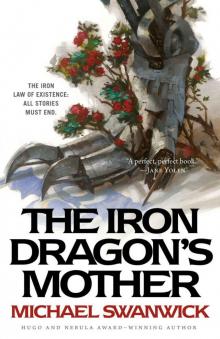 The Iron Dragon’s Mother
The Iron Dragon’s Mother The Mongolian Wizard Stories
The Mongolian Wizard Stories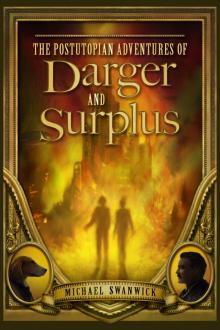 The Postutopian Adventures of Darger and Surplus
The Postutopian Adventures of Darger and Surplus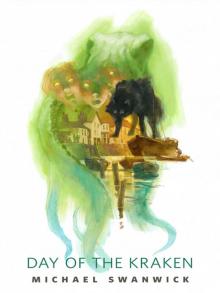 Day of the Kraken
Day of the Kraken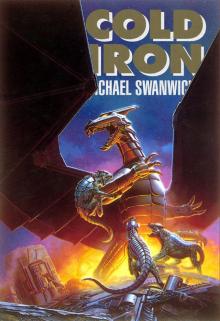 Cold Iron
Cold Iron Murder in the Spook House: A Tor.com Original
Murder in the Spook House: A Tor.com Original Radio Waves
Radio Waves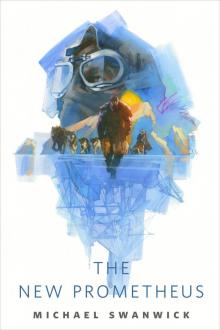 The New Prometheus: A Tor.com Original
The New Prometheus: A Tor.com Original Stations of the Tide
Stations of the Tide Vacuum Flowers
Vacuum Flowers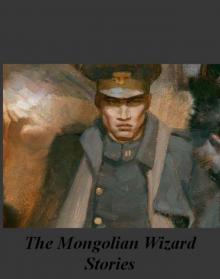 The Mongolian Wizard Stories (online stories 1-7)
The Mongolian Wizard Stories (online stories 1-7)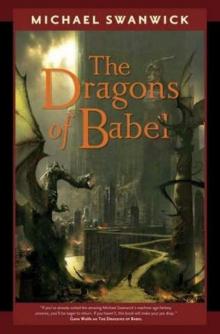 The Dragons of Babel
The Dragons of Babel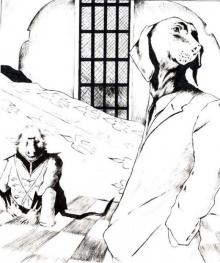 The Dog Said Bow-Wow
The Dog Said Bow-Wow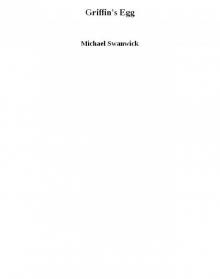 Griffin's Egg
Griffin's Egg The Best of Michael Swanwick
The Best of Michael Swanwick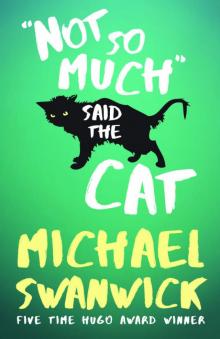 Not So Much, Said the Cat
Not So Much, Said the Cat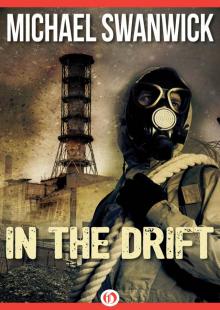 In the Drift
In the Drift Vacumn Flowers
Vacumn Flowers Slow Life
Slow Life The Wisdom Of Old Earth
The Wisdom Of Old Earth Legions In Time
Legions In Time Scherzo with Tyrannosaur
Scherzo with Tyrannosaur The Year's Best Science Fiction (2008 Edition)
The Year's Best Science Fiction (2008 Edition)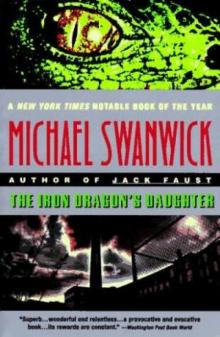 The Iron Dragon's Daughter
The Iron Dragon's Daughter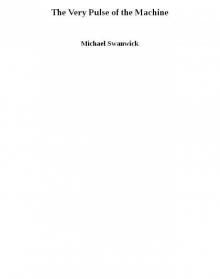 The Very Pulse of the Machine
The Very Pulse of the Machine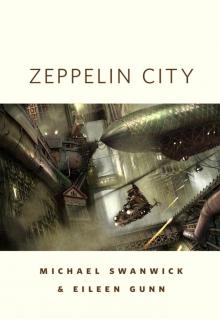 Zeppelin City
Zeppelin City Dancing with Bears
Dancing with Bears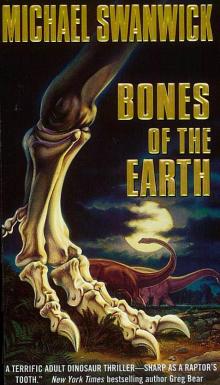 Bones of the Earth
Bones of the Earth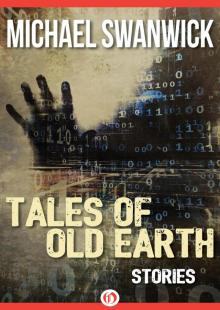 Tales of Old Earth
Tales of Old Earth Trojan Horse
Trojan Horse Radiant Doors
Radiant Doors